The best varieties of dill for greens: early ripening, mid-ripening and late-ripening
Greens are in great demand at any time of the year. It adds flavor to any dish, and its draining aroma makes you hungry. Dill also used as a medicine. It can be eaten fresh or dried for the winter, salted and frozen. This is a versatile plant that any housewife uses in her kitchen.
Content:
- Growing dill for greens: features and watering
- Early ripe varieties of dill
- Mid-season varieties
- Late-ripening varieties of dill
- Seed care and collection
- Diseases and prevention
Growing dill for greens: features and watering
A feature of dill is that it is easy to care for and growing... This plant is quite powerful and tall, has many leafy pagons. It is recommended to grow dill sparsely, it is desirable that there is a distance of 25 centimeters between the rows. It usually grows as a bush, has a lush and dense rosette of leaves. Its internodes are located close enough to each other in the lower part of the plant. The number of shoots in hot weather becomes less, and the dill looks poorer.
It is best to start growing dill using seedlings that are sown early.
If you decide to sell it in the spring, then it is worth sowing it in a film-type greenhouse. At the end of March at the beginning of April, depending on weather conditions, dill is planted in open ground in May.
Regardless of the type of dill, it is necessary to carry out watering and loosening the soil. Feed plant preferably twice for good growth. Please note - in the first days or weeks after sowing dill, it is advisable to cover the soil with a film so that it is warm in cold weather. As soon as the temperature rises, it can be removed. Water the plant regularly as soon as the soil begins to dry out.
Thus, dill is a special plant, care which does not require much time and effort. Its pleasant aroma and leaves will give your dish a special taste.
Early ripe varieties of dill
Since dill is a cultivated plant, there are many varieties of it. Among the early ripening varieties, the most popular are:
- Grenadier. The period from the descent to harvesting of this variety of dill takes a little more than a month, and if you want to use the grenadier as a spice, then you need to remove it after 2-3 months. The plant is usually grown to be used as a greenery. Dill leaves are large enough, raised. They are deep green in color and have pigmentation. It gives stable harvest and is not whimsical at all in leaving. Grenadier greens have a delicate taste, they are juicy and deplete the pleasant aroma.
- Gribovsky. The period from the descent to harvesting of this variety of dill takes a month and a half, if you want to grow a mushroom variety with spices, then it should be removed after 2 months. Perhaps this is the most popular variety of dill, which is grown for greens. He is not whimsical in leaving, rarely gives in to influence pests... The aroma of greens is very strong, as are the taste.The leaves are very large, dark green in color. This variety of dill is capable of self-seeding. Thanks to this, it is convenient to propagate it using padanok. Gribovsky can be frozen or canned, the greens do not lose their color or taste from this.
- Further. The period from gathering to harvesting of this variety of dill takes a month and a half. Suitable for growing dill for herbs. Has a semi-raised rosette with leaves of a medium plant. They are green in color and have a waxy bloom effect. The undoubted advantage of this variety is that it does not lend itself to the influence of pests and is resistant to winds and temperature extremes.
- Umbrella. The time from germination to harvesting takes just over a month. Has a medium outlet. Sowing should be carried out in moist soil and water should be used all the time of planting. A feature of this variety is that it must be fed with nitrogen fertilizers either in early spring or during the growing season. Harvesting is already possible in May. The greens are juicy and bright.
- Redoubt. The time from germination to the moment of harvesting takes one and a half months. Redoubt greens are very fragrant, so almost all housewives add it to their dishes with pleasure. In May, you can already safely harvest. Leaves are medium in size, bright green.
Thus, growing early varieties of dill, you can pamper your loved ones with fragrant herbs as early as late spring.
Mid-season varieties
Among the mid-season varieties of dill, the most popular are the following:
- Umbrella. The time until harvest takes a month and ten days. Has a semi-raised rosette of leaves. They are large, deep green with a cross-section. The leaves are long enough. The umbrella itself is medium in size. Greens have a pronounced aroma. High yield.
- Alligator. Greens can already be harvested 45 days after planting seed... It can be cut more than once, the greens grow quickly. The umbrella is not immediately thrown away. Has a large and raised rosette of leaves. They are large enough and have a gray tint. Steming is slow. Greens have a pleasant aroma and rich taste.
- Amazon. Greens can be cut off within a month and a half after sowing (usually in May). Has a raised rosette of leaves, which prevents them from getting dirty in case of rain. The leaves are large, very juicy and fragrant, rich green color. Amazon is not whimsical in harvesting and gives a high yield. Stored for a long time without losing color or taste.
- Kibray. The period from sowing to harvesting greenery is a month. If you want to use this type of dill as a spice, then you need to remove it one and a half months after the seeds germinate. The leaves are wide enough to deplete the pleasant aroma. They are light green in color. The greens are juicy and tender. Kibray has a large and raised socket. Sow the seeds dill early enough, cover the soil with a film so that it does not freeze. If you want to get juicy and tender greens, then you need to plant kibray in early spring and sprinkle the seeds with earth lightly. This variety is popular due to its high yield and bright aroma. The disadvantage is that it can be affected by such a pest as powdery mildew... As a rule, such dill is grown in moist soil.
- Max. The time from germination to the moment of harvesting takes one and a half months. Grown both for herbs and spices. Max has medium-sized leaves with a rich green color. They are diamond-shaped and juicy in taste. As a rule, seeds are sown in late spring. This variety has a semi-raised rosette. The cultivated plant is of medium height and there are rosettes near the very base of the dill stem. Max has a high yield and unpretentious care.
- Richelieu. The greens can be cut off after just over a month. Sowing is carried out at the very beginning of May. Richelieu has a semi-raised rosette. The leaves are large enough, green in color.They are slit, and the segmentation is flattened. Leaves are of medium length and similar to openwork. This variety is very resistant to various kinds of pests. The aroma of greenery is rich and bright. The taste is delicate and juicy.
Thus, mid-season varieties dill will allow you to enjoy greenery from May. With regular pruning of greens, it will grow again, which is very convenient.
Late-ripening varieties of dill
If you want to enjoy the fragrant greens as long as possible, then you need to sow the following varieties of late-ripening dill:
- Frost. In order to get greens by conveyor method, it is necessary to sow every 10 days the seeds dill starting in April and ending in August. The hoarfrost has a raised rosette, so the leaves remain clean even after heavy rain. They are very long and have a bluish color spectrum that varies with the amount of sunlight received. The plant itself is quite sprawling. The leaves are plentiful and deplete the strong, spicy scent. The umbrella is also large, with multiple beams. High productivity. Even if you freeze the greens, they will not lose their qualities and aroma. Moreover, it will be like fresh from the garden.
- Kutuzovsky. You can start cutting the greens already a month and ten days after the seeds germinate. Has a half-raised rosette, many leaves. They are very large, light green in color, delicate in taste. They have filamentous segmentation and are elongated. Possesses high aroma and excellent taste. The greens do not dry out quickly and new ones constantly appear after the cuts throughout the season.
- Mischievous. In order to get greens in a conveyor way, it is necessary to do new crops every week. The mischievous rosette has a raised rosette and many basal roots at the very base of the stem. The leaves are diamond-shaped, bluish in color and of medium length. May have a waxy effect. Strong aromatic sillage and high yield. Greens can be used as spice additives.
Thus, late-ripening varieties of dill will allow you to feel the aroma and taste of freshness throughout not only the summer season, but even in cold winters, if you freeze the dill greens in the freezer.
Seed care and collection
Dill care includes:
Please note that if you grow dill for greens, then you can already start cutting it when the cultivated plant becomes 20 centimeters in height.
Tip - don't plant the dill too thick.
You also need to do 2 feeding... The first is carried out when the first two leaves appear, and the second - at the time of laying the umbrella. Since the seeds of the plant crumble quite easily, they must be harvested as soon as they ripen. You just need to cut the umbrellas and spread them out on paper so that they dry out. If the umbrellas are not ripe enough, then you can hang them by putting paper bags on them so that the seed in them falls out after full ripening. It is best to store seeds in glass containers and dry.
Diseases and prevention
Like any other plant, dill lends itself to the influence of certain pests, among which are:
- Powdery mildew. It appears as a white bloom throughout the plant. From her, dill loses all its taste. In no case should you use drugs chemical composition. Try to immediately destroy such a plant if the dew has completely affected it. In the event of its first signs, spray the dill with a sulfur suspension.
- Fomoz. Appears on the outlet as dark dots. The leaves themselves turn black in color. In this case, it is necessary to sow dill in this place no earlier than four years later. The infected plant should be removed.
- Peronosporosis. It affects dill leaves. It appears in the form of oily spots at first light in color.Over time, they form a purple bloom. If you notice the first signs of illness, spray the dill with copper oxychloride. You can also use Bordeaux copper sulfate liquid. To avoid diseases it is necessary to feed the plant with ammonia sulfur just before planting.
Thus, in order to avoid pests, you need to change the place of planting and carefully monitor the plant - at the first signs of illness - take preventive measures.
Growing dill for greens is not a difficult task, the most important thing in this matter is desire.
In addition, the plant does not require special care - it is enough to water and weed the dill on time - and fresh, fragrant greens are provided for you.
More information can be found in the video.



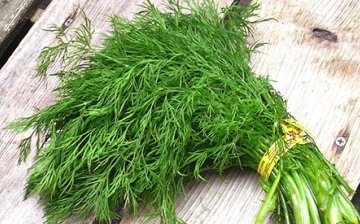
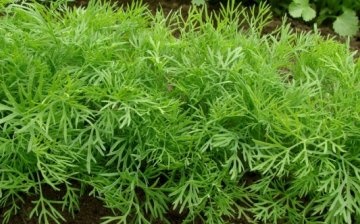
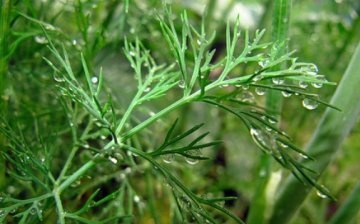



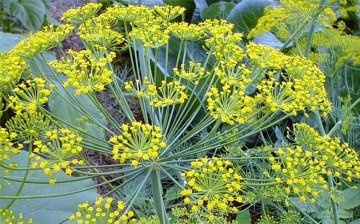







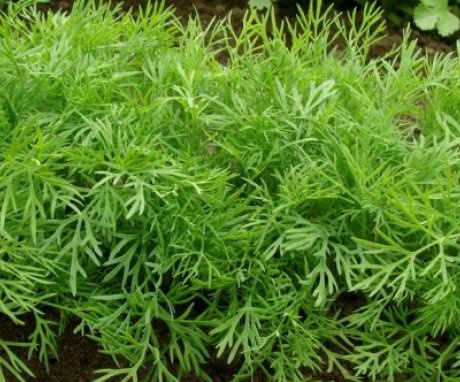

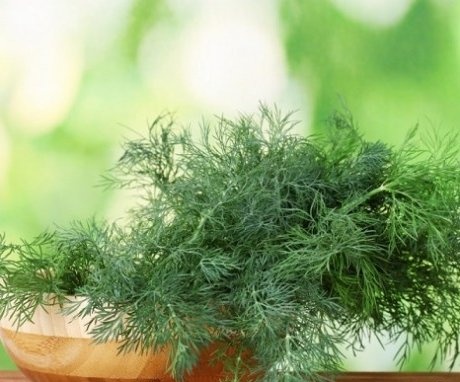
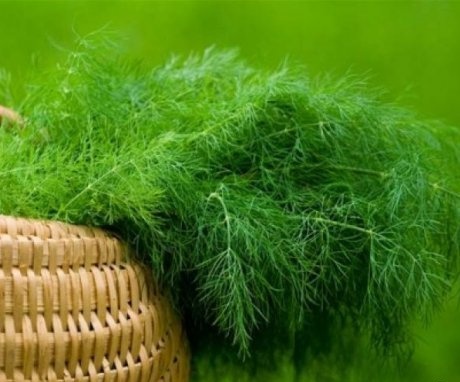
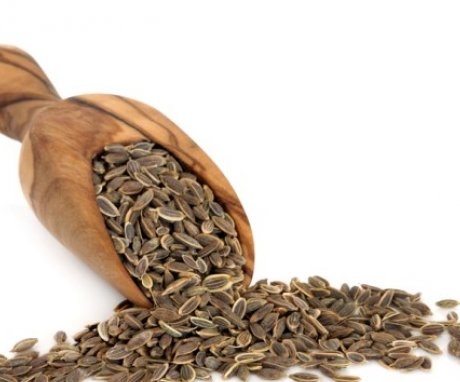
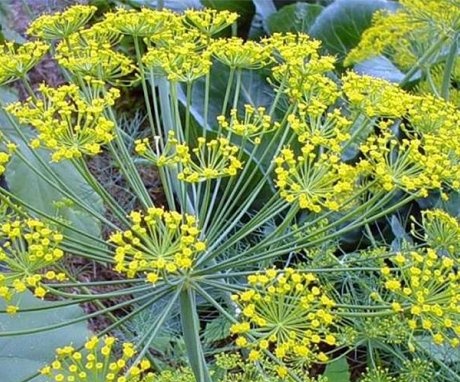
To be honest, I never went into the details of the varieties of dill. I bought any, which comes to hand. And it turns out that there is also a varietal dill. I need to take a closer look next time.